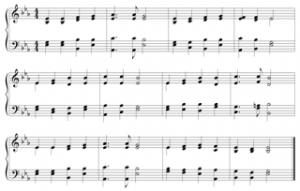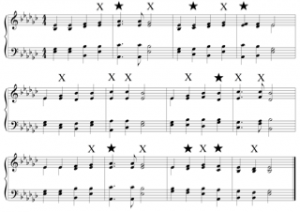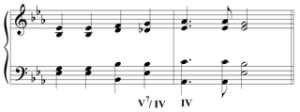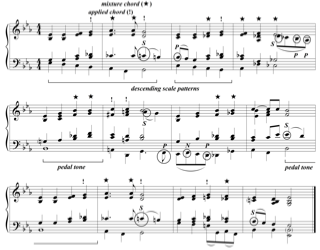Used in moderation, playing hymn re-harmonizations on selected hymn stanzas can enliven an assembly’s singing, renew interest in older church repertoire, and draw attention to the text by musically underscoring certain words. Many hymn re-harmonizations are available for download through Prelude Music Planner—search by tune name and filter your results by instrument, this will allow you to see alternate harmonizations available for download. And here are some other resources for you to consider adding to your music library:
- Introductions and Alternate Accompaniments for Organ
- Introductions and Alternate Accompaniments for Piano
- The Art of Hymn Playing, by Charles Callahan (MorningStar Music)
- The Art of Hymn Playing Volume II, by Charles Callahan (MorningStar Music)
Have you ever tried writing your own hymn re-harmonization? It can be a rewarding exercise, and it is a way to begin learning how to improvise at the keyboard. Choose a hymn you love, one your local assembly enjoys singing, and set a goal to write your own setting of it.
I use a five-step process when writing hymn re-harmonizations, and you may find it useful to adopt a similar approach. To demonstrate, I am using the tune Gethsemane (Redhead), which appears twice in Evangelical Lutheran Worship: “Go to Dark Gethsemane” (ELW 347) and “Chief of Sinners Though I Be” (ELW 609). Here it is in its original harmonization:
Step 1: Play the hymn in the parallel minor mode. Here is Gethsemane in E-flat minor:
This has an entirely different sound, of course, and this is a great first step in opening your ears to different harmonic possibilities. Of the 42 melody notes in this tune, 29 of them can be harmonized with chords from the parallel minor mode (this is called “mode mixture”). Chords with ‘G's and ‘C's in the melody are not options since these tones are lowered a half-step when placed in the minor mode—these chords have an ‘X’ above them in the example. Chords marked with stars are ones that strike me as good candidates for inclusion in the final version.
Step 2: Consider other harmonic (chromatic) possibilities.
Play the tune in its original mode and look for opportunities to insert applied chords (sometimes called “secondary dominants” or “secondary leading-tone chords”). Here is an example of measure one, where an applied dominant progresses smoothly to the subdominant on beat one of measure two:
In addition to applied chords, make note of chords where you could insert added notes, or chord extensions: 2nds, 9ths, 11ths, etc. In the end, you won’t use everything—but keep your options open at this point!
Step 3: Write a strong alternate bass line.
The bass line is crucial to a successful hymn re-harmonization. Even the slightest change to the original bass line can have a huge payoff in your setting. I have found that descending (or ascending) scale patterns are especially useful. Pedal tones (despite their occasional overuse) can also effectively reshape bass lines.
Step 4: Add embellishing tones (sometimes called “figuration”).
While there are many types of embellishing tones, the three basic types can add a lot of interest to your hymn re-harmonization: passing tones, neighbor tones, and suspensions. They can help propel the music forward and fill in rhythmic gaps caused by longer melody notes.
Step 5: Review steps 1-4, decide what goes and what stays, then write your final version. Here is my setting of Gethsemane, with annotations (S = suspension, P = passing tone, N = neighbor tone):
One last thought about hymn re-harmonizations: they do not always have to be used in the final verse of a hymn. Playing this highly chromatic setting of Gethsemane on verse two of “Go to Dark Gethsemane” may help to capture musically these ideas in the text: judgment, wormwood, gall, pangs, suffering, shame, and loss.
Download a printable PDF of examples from this post: "How to Re-harmonize Hymns" Examples
Get a free download of my re-harmonization of Gethsemane that you can use in upcoming Lent and Holy Week services!








